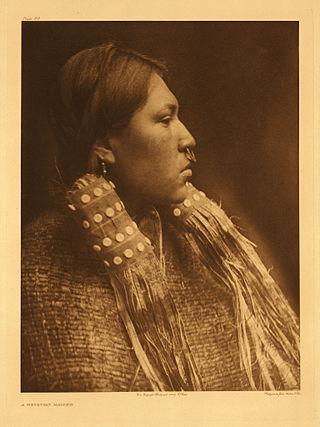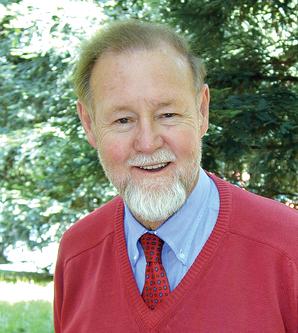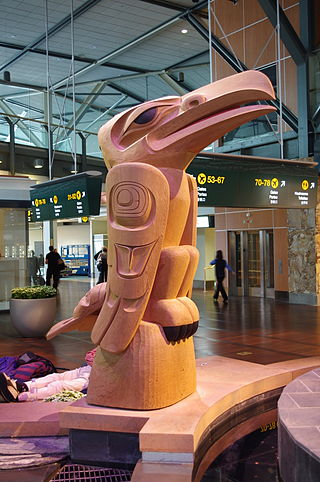
William Ronald Reid Jr. was a Haida artist whose works include jewelry, sculpture, screen-printing, and paintings. Producing over one thousand original works during his fifty-year career, Reid is regarded as one of the most significant Northwest Coast artists of the late twentieth century.

Haida Gwaii, also known as the Queen Charlotte Islands, is an archipelago located between 55–125 km (34–78 mi) off the northern Pacific coast of Canada. The islands are separated from the mainland to the east by the shallow Hecate Strait. Queen Charlotte Sound lies to the south, with Vancouver Island beyond. To the north, the disputed Dixon Entrance separates Haida Gwaii from the Alexander Archipelago in the U.S. state of Alaska.

The Tla-o-qui-aht First Nations are a Nuu-chah-nulth First Nation in Canada. They live on ten reserves along the Pacific Rim National Park Reserve on Vancouver Island, British Columbia. The band is part of the Nuu-chah-nulth Tribal Council. There were 618 people living in the Tla-o-qui-aht reserves in 1995. Their primary economic activities are fishing and tourism.

Jack Dangermond is an American billionaire businessman and environmental scientist, who in 1969 co-founded, with Laura Dangermond, the Environmental Systems Research Institute (Esri), a privately held geographic information systems (GIS) software company. As of July 2023, his net worth was estimated at US$9.3 billion.

The Hesquiaht First Nation is one of the Nuu-chah-nulth Nations, located on west side of Vancouver Island. Approximately 100 people live in Hot Springs Cove, with a commute of over one hour by boat into Tofino. The Hot Springs Cove reserve is located on territory claimed by the Ahousaht First Nation.

Roger Frank Tomlinson was an English-Canadian geographer and the primary originator of modern geographic information systems (GIS), and has been acknowledged as the "father of GIS."
Robert Charles Davidson, is a Canadian artist of Haida heritage. Davidson's Haida name is G̲uud San Glans, which means "Eagle of the Dawn". He is a leading figure in the renaissance of Haida art and culture. He lives in White Rock, British Columbia.

Dempsey Bob, is a Northwest Coast woodcarver and sculptor from British Columbia, Canada, who is of Tahltan and Tlingit First Nations descent. He was born in the Tahltan village of Telegraph Creek on the Stikine River in northwestern B.C., and is of the Wolf clan.
Freda Diesing was a Haida woman of the Sadsugohilanes Clan, one of very few female carvers of Northwest Coast totem poles and a member of the Council of the Haida Nation of British Columbia, Canada. Her Haida name is Skil Kew Wat, meaning "magical little woman."
The Nuu-chah-nulth Tribal Council is a First Nations Tribal Council in the Canadian province of British Columbia, located on the west coast of Vancouver Island. The organization is based in Port Alberni, British Columbia.
Ecotrust is a nonprofit organization based in Portland, Oregon, working to create social, economic, and environmental benefits.
The Nuu-Chah-Nulth Employment and Training Program (NETP) is a program that seeks to help all aboriginal people with education and training. The overall mission of the NETP is to increase the quality of life, self-reliance and economic prosperity of aboriginal people and organizations within the Nuu-chah-nulth Tribal Council region by supporting and empowering career and employment aspirations.

Ian Gill is an Australian-Canadian writer, documentary filmmaker, and social entrepreneur. He has been the director of Ecotrust Canada since 1994. Before that he worked as a reporter for the Canadian Broadcasting Corporation.
Dorothy Grant is an Indigenous fashion designer whose works have gained public recognition as expressions of living Haida culture.
Esri Canada is the Canadian provider of enterprise geographic information system (GIS) software from Esri. GIS allows multiple layers of information to be displayed on a single map. A third of its offerings are professional services.

Living Oceans Society is a Canadian environmental organization that has been a leader in the effort to protect Canada's oceans since 1998. It is based in Sointula, British Columbia, with a satellite office in Vancouver, British Columbia. Living Oceans Society's vision states that: "Canada's oceans are sustainably managed and thriving with abundant sea life that supports vibrant and resilient communities."

Primrose Adams was a Canadian First Nations artist and member of the Raven Clan from the Haida nation. She wove hats and baskets in the Haida method and is most notable for her spruce root basketry, which involves working in the traditional manner of collecting and dyeing her own spruce root. Adams died in January 2020.
Phil Gray is a Canadian artist who specializes in wood carvings from the Tsimshian and Mikisew Cree communities. His work uses traditional technique and features imagery from legends. In 2014, Gray was awarded a British Columbia Creative Achievement Award in Aboriginal Art from the Government of British Columbia.

Gwaai Edenshaw is a Haida artist and filmmaker from Canada. Along with Helen Haig-Brown, he co-directed Edge of the Knife, the first Haida language feature film.

Terri-Lynn Williams-Davidson is a Canadian First Nations lawyer, artist, activist, and author and a member of the Raven Clan from the Haida Nation. As a lawyer, Williams-Davidson specializes in Indigenous and environmental law, having represented the Haida Nation at all levels of court since 1996 and notably participating in the litigation of the Haida Nation's TFL39 Case to protect the old-growth forests of Haida Gwaii, a case that effectively altered the government's stance on the consultation and accommodation of Aboriginal Rights.












